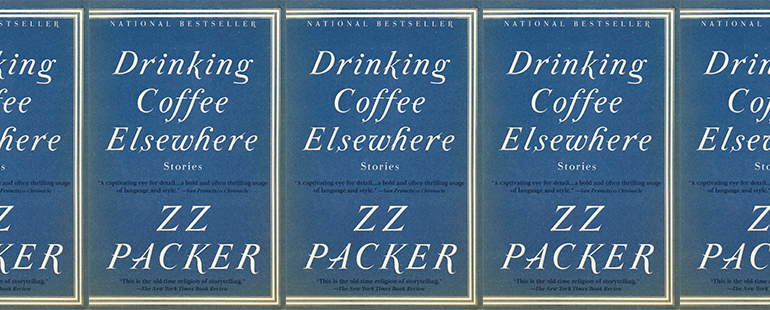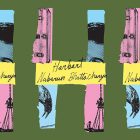The Complicated Reality of Travel in Drinking Coffee Elsewhere

Before the COVID-19 pandemic, it seemed like everyone loved to travel. Photos of smiling people in exotic locales had become an internet staple, their popularity indicating just how high the cultural premium on getting out and getting away was—and is. Travel lust may be rampant, these days more than ever, and travel itself may broaden the mind, but there’s more to a journey than good cheer. In ZZ Packer’s 2003 short story collection, Drinking Coffee Elsewhere, being somewhere else is built directly into the title, and the stories often feature characters in new environments, struggling to navigate their changed surroundings; travel pervades this collection, but the stories refute fantasies in favor of more complex realities of what can happen on a journey.
In the opening story, “Brownies,” travel comes in the form of a Brownies troop leaving home to spend a few nights at a sleepaway camp. This trip is part of a vague educational initiative around experiencing the great outdoors, but the troop’s focus is more on the human curiosities they encounter. As the Black narrator, nicknamed Snot, puts it, “when you lived in the south suburbs of Atlanta, it was easy to forget about whites. Whites were . . . real and existing, but rarely seen or thought about.” At camp, though, “the ten white girls behind us . . . were instantly real and memorable. This alone was reason for envy and hatred.” Snot and her troop are encountering race in a new way, and their experience sours quickly in line with how they expect to be treated. Snot reports that “by our second day at Camp Crescendo, the girls in my Brownie troop had decided to kick the asses of each and every girl in Brownie Troop 909.” The reason? Troop member Arnetta “said she’d heard one of them Troop 909 girls call Daphne a n——.”
Snot’s troop latches onto this outrage and the need for revenge. They become caught up in plots, including one suggestion to “sneak into they cabin, then we’ll put daddy longlegs in they sleeping bags . . . Then we gone beat ‘em up till they’re flat as frying pans!” The troop plans and conspires, but when their moment arrives, the clash does not go as expected. There is more to Troop 909 than met the troop’s eye, and in the aftermath of their revenge gone sideways, Snot and her troop are led to consider the world’s vast inequities in a new light. Snot reflects that “when you’ve been made to feel bad for so long, you jump at the chance to do it to others.” This insight challenges the troop’s original assumptions about their experience of race, showing a previously unsuspected and more complicated reality.
The collection’s third story, “Our Lady of Peace,” similarly prominently features travel as a means of escape. Lynnea begins the story intent on getting out of her hometown, firmly convinced that “any place was better than Odair County.” Her desire is driven by a lifetime of dislike for the people at home as well as an incident that takes place when she returns after college. She worked at a Quickie Mart until “one night—while in the middle of reminding herself that the job was beneath her . . . four high school boys wearing masks held up the place with plastic guns.” Though physically unharmed, this event spurns Lynnea to leave, to find a place more suited to her notions of how life should be. She chooses Baltimore from a map, moves there, and eventually finds employment as a high-school English teacher. She has broken free of Odair County, but the challenges of Baltimore prove considerable.
While teaching, Lynnea finds that she “approached the chalkboard crabwise, afraid that if she turned her back to write anything on it, the students would rearrange their desks. Or a student might just up and leave, or curse her out. Or hit her”—all of which does happen at some point. She speaks to fellow teachers about these difficulties and tells herself she’ll manage because “I’ve been through some tough times.” Despite her efforts, though, Lynnea ends the story “[knowing] that her teaching days were over . . . as she reversed . . . as she took off.” In her case, escape has only bred escape. She left Odair County thinking another place would be better, but her new home became just like her old one—another place to flee.
“Drinking Coffee Elsewhere” gives the collection its title and presents travel as an internal fantasy, a kind of dream. The narrator, Dina, travels from Baltimore to Yale for college, but this relocation results in unexpected developments. Until Yale, Dina had “been good in all the ways that were meant to matter,” but once at school, she begins to perform poorly academically, makes comments that earn her weekly psychiatric counseling, and keeps to herself in a single room. She refuses to evolve along the expected routes, instead retreating into loneliness and illusions. She dreams of her dead mother, thinking that, “she looked like a tourist who’d asked for directions to a place she thought was simple enough to get to only to hear a series of hypothetical turns, alleys, one-way streets. Her response was to nod politely . . . to nod and save herself from the knowledge that she would never be able to get where she wanted to go.” Dina’s description of her mother’s confusion could just as well be an articulation of her own.
The only person who penetrates Dina’s shell is fellow student Heidi. Heidi seeks Dina out for companionship, and theirs is a relationship of awkward adolescence, toeing the line between friendship and romance. As Heidi navigates her own coming out, Dina continues to refuse to budge from her self-induced misanthropy. At one point, Dina reflects on how, “the morning of my mother’s funeral . . . I’d been given milk to settle my stomach; I’d pretended it was coffee. I imagined I was drinking coffee elsewhere.” Travel for Dina is internal, wish-fulfillment that comes at a cost. When Heidi’s own mother falls ill and Heidi needs Dina’s support, Dina balks, saying to a gathered group of friends that, “She’s going to a funeral, not a Save the Dykes rally.” Dina does not end up traveling with Heidi, and this failure precipitates her own move back home. For Dina, the fantasy of being elsewhere ends with her being exactly where she started.
Later in the collection, a character also named Dina—it is unclear if it is the same Dina—travels to Japan in the story “Geese.” This Dina’s story may represent the most typical travel story in that she “did not want to say it, because it made no practical sense, but in the end she went to Japan for the delicate sake cups, resting in her hand like a blossom; she went to Japan for loveliness.” This is a fantasy most people have probably had about visiting a different country, and while Dina does find loveliness in Japan, she also finds struggle.
Dina initially finds a job at an amusement park named Summerland and strikes up a friendship with a man named Ari. After summer ends and Dina’s expired visa makes further employment impossible, she moves in with Ari and a handful of other roommates. Five people crowd together in a one-room apartment, none of them with a way of making money. Their common struggles unite them as they steal food for the household and search for employment, but life dissolves into one in which “there were two types of hunger—one in which you would do anything for food, the other in which you could not bring yourself to complete the smallest task for it.” Dina eventually accepts the offer of a man, a “business-suited sararimen . . . propositioning her with English phrases they’d had gaijin teach them—‘verrru sexy,’ they’d say . . . ‘Verry chah-ming daaark-ku skin.’” She leaves her encounter with him with money, but also with the knowledge of how it’s possible for journeys to take you somewhere you never wanted to be. Dina has been forced to abandon the beauty of the journey in favor of the ugliness of survival.
The final story in the collection is “Doris is Coming,” a piece notable for its relative lack of travel. The narrative centers on high-school student Doris as she attempts to balance religious instruction, neighborhood wisdom, and her own desire to participate in the Civil Rights movement. “Once she’d even asked Reverend Sykes if she could go to a march, just one, but the answer had been no, that Saints didn’t go to marches,” and so Doris holds off despite badly wanting to take part. This conflict seems ripe for eventual travel, for Doris to leave home to attend one of the marches or sit-ins she has seen and admired on TV, but Doris takes a different approach. Rather than go elsewhere, she stages a protest on her home turf and in her own way. She does not seek escape or fantasy, and she ends feeling that “she had to stop and look. The sky had just turned her favorite shade of barely lit blue, the kind that came to windows when you couldn’t get back to sleep but couldn’t quite pry yourself awake.” Doris makes a different decision from many in Drinking Coffee Elsewhere, and the result is that she succeeds in briefly merging reality and fantasy. Her story suggests the possibility of another kind of travel, that despite the prevalence of travel narratives, important journeys can take place anywhere at all.



